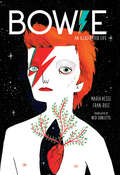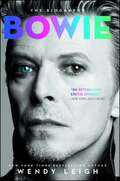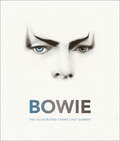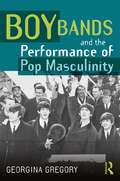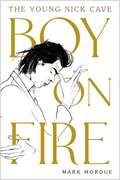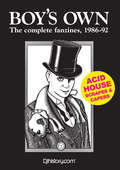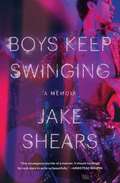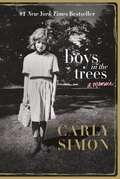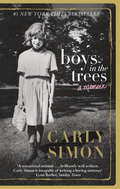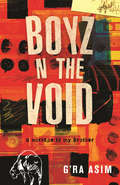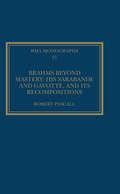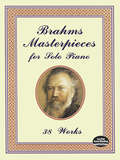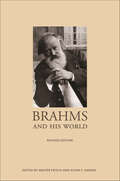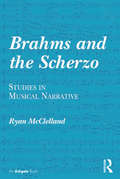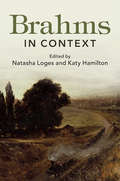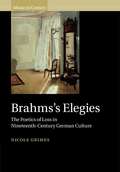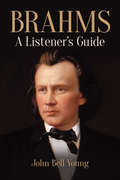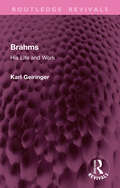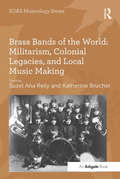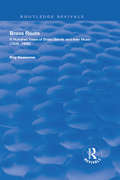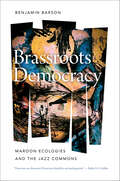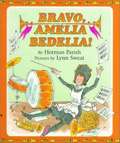- Table View
- List View
Bowie: An Illustrated Life
by María Hesse Fran Ruiz&“An entertaining and informative glimpse of Bowie&’s public and private life, music and disappearance from this earth.&” —Shelf Media Group David Bowie was a master of artifice and reinvention. In that same spirit, illustrator María Hesse and writer Fran Ruiz have created a vivid retelling of the life of David Robert Jones, from his working-class childhood to glam rock success to superstardom, concluding with the final recording sessions after his cancer diagnosis. Narrated from the rock star&’s point of view, Bowie colorfully renders both the personal and the professional turning points in a life marked by evolution and innovation. We see Bowie facing the sorrow of his brother&’s mental illness, kicking a cocaine habit while other musicians succumbed to deadly overdoses, contending with a tumultuous love life, and radiating joy as a father. Along the way, he describes how he shattered the boundaries of song and society with a counterculture cast that included Iggy Pop, Brian Eno, and Freddie Mercury, as well as his own creations, Ziggy Stardust and the Thin White Duke. Evocatively illustrated from start to finish, Bowie is a stellar tribute to an inimitable star. &“While Bowie portrayed many larger-than-life characters in his music, this book attempts to turn Bowie himself into a similarly superhuman character, adding a few extra dashes of magic, wonder and awe into his already stunning life as an artist.&” —Paste &“Beautifully illustrated . . . Not a &‘graphic biography&’ but something more imaginative.&” —Shepherd Express &“The art reflects a man consumed with himself as an evolving art project, at once self-absorbed and self-sacrificing, cooly aesthetic and curiously, lovably human.&” —Publishers Weekly
Bowie: The Biography
by Wendy LeighZiggy Stardust, Aladdin Sane, the Thin White Duke. Gender Bender. Rebel. Songwriter. Fashion Icon. Rock God. One of the most influential creative artists of his generation, David Bowie morphed from one glittering incarnation to the next over the course of five decades--an enduring superstar who remained endlessly enigmatic and always ahead of his time. Discover the man behind the myth in this intimate and in-depth biography--featuring a full-color sixteen-page photo insert.David Bowie passed away after an eighteen-month battle with cancer on January 10, 2016. Few knew of his illness, and Bowie flawlessly orchestrated his last goodbye with the release of his final (and some say best) album, Blackstar, featuring the haunting song "Lazarus," and its accompanying video, a farewell message to his millions of fans. Throughout his iconic career that included such hits as "Let's Dance," "Space Oddity," "Heroes," "Modern Love," and "Life on Mars," Bowie managed to retain his Hollywood star mystique. Through in-depth interviews with those who knew him best, New York Times bestselling author Wendy Leigh reveals the man behind Bowie's myriad images--up to and including his role as stay-at-home dad, happily monogamous in his quarter-of-a-century-plus marriage to supermodel Iman. In this "sizzling" (Radar Online) new biography, Leigh brings fresh insights to Bowie's battles with addiction; his insatiable sex life--from self-avowed gay to bisexual to resolutely heterosexual--and countless conquests; his childhood in a working-class London neighborhood and the troubling family influences that fueled his relentless pursuit of success; and much more. This exploration of an artist beloved by so many reveals the man at the center of the mythos.
Bowie: The Illustrated Story
by Pat GilbertA tribute "with enough insight into every phase of the Thin White Duke's career to send even the most devoted superfans into moonage daydreams of their own" (Creative Loafing: Tampa Bay).David Bowie released an incredible twenty-seven studio albums, beginning with his eponymous 1967 debut and ending with Blackstar, released just two days before his untimely death in January 2016. Widely regarded as one of the most influential musicians and performers of the previous five decades, Bowie demolished what were thought to be the limitations of stagecraft in rock music, as well as proving it possible for an artist to constantly—and successfully—redefine himself. As a result, Bowie has been credited with inspiring genres as disparate as glam and punk rock.This sharply written and gorgeously designed retrospective follows Bowie's career from the folkie baroque rock of his debut, to his breakthrough single "Space Oddity," and on to his flamboyant glam rock alter ego,Ziggy Stardust. Author Pat Gilbert continues through Bowie's soul phase, his electronic Berlin trilogy, his massive pop success in the 1980s, and his turn to electronica in the 1990s, as well as subsequent tours, notable performances, collaborations, and accolades.Nearly every page is illustrated withstunning concert and candid offstage photography, including gig posters, seven-inch picture sleeves, concert ticket stubs, and more. The result isa fitting tribute to one of the most influential and admired stars in rock history. "A labor of love . . . For those looking for an excuse to live in Bowie's world for just a small amount of time, there is little doubt to this book's appeal." —Spectrum Culture
Boy Bands and the Performance of Pop Masculinity
by Georgina GregoryBoy Bands and the Performance of Pop Masculinity provides a history of the boy band from the Beatles to One Direction, placing the modern male pop group within the wider context of twentieth- and twenty-first-century popular music and culture. Offering the first extended look at pop masculinity as exhibited by boy bands, this volume links the evolving expressions of gender and sexuality in the boy band to wider economic and social changes that have resulted in new ways of representing what it is to be a man. The popularity of boy bands is unquestionable, and their contributions to popular music are significant, yet they have attracted relatively little study. This book fills that gap with chapters exploring the challenges of defining the boy band phenomenon, its origins and history from the 1940s to the present, the role of management and marketing, the performance of gender and sexuality, and the nature of fandom and fan agency. Throughout, the author illuminates the ways in which identity politics influence the production and consumption of pop music and shows how the mainstream pop of boy bands can both reinforce and subvert gender and class hierarchies.
Boy on Fire: The Young Nick Cave
by Mark MordueThe first volume of the long-awaited, near-mythical biography of Nick Cave, by award-winning writer Mark Mordue. An intensely beautiful, profound, and poetic biography of the formative years of the dark prince of rock 'n' roll, Boy on Fire is Nick Cave's creation story, a portrait of the artist first as a boy, then as a young man. A deeply insightful work that charts his family, friends, influences, milieu, and, most of all, his music, the book reveals how Nick Cave shaped himself into the extraordinary artist he would become. A powerful account of a singular, uncompromising artist, Boy on Fire is also a vivid and evocative rendering of a time and place, from the fast-running dark rivers and ghost gums of country-town Australia to the torn wallpaper, sticky carpet, and manic energy of the nascent punk scene which hit staid 1970s Melbourne like an atom bomb. Boy on Fire is a stunning biographical achievement.
Boy's Own: The Complete Fanzines 1986-92
by Frank BroughtonThere’s a moment in Jack Kerouac’s 1962 autobiographical come-down novel ‘Big Sur’ where ‘the King of the Beats’ (a term he hated) comes face to face with “some sort of Beat Jesus”, an 18 year old proto-hippy “with a beard and crazy hair”, in San Francisco a good eight or nine years before Woodstock, and a forbearer of a subcultural, generational shift that arguably changed Western culture for good. Boys Own, the Complete Fanzines, 1986-92, has Big Sur moments peppered through the 1986-88 issues, as a small crew of West London football lads, clubbers, music freaks and blaggers start to realise that they’re not just near the centre of Acid House as it starts to emerge from the primordial soup of mid 80’s UK subculture, they and the faces around them are helping create it. Just as Kerouac refused to be dragged into the patchouli scented embrace of the idealistic movement he helped create, by Autumn 1988 the Boys Own central committee were already kicking back against the commercialised explosion in Acid House culture : The TV documentary crews lurking around raves were mocked, the first wave of mass market ravers in Top Shop bought smiley t shirts were famously branded ‘Teds’, the plain clothes coppers in bandanas and day glo laughed at. But whilst Kerouac’s bitterness against the hippies he’d helped create solidified into a destructive, reactionary, booze fuelled hatred, the Boys Own lot carried on throwing parties, dj ing and making records, always ready to have a laugh from the side lines at the assumed self-importance of those same activities. The Boys Own Fanzines, like Oz and International Times for the hippies, or Sniffing Glue and Vague for the punks, remain an invaluable collection of first hand accounts and sharp witted commentaries documenting the pre-history, moment of inception, and after-shocks of Acid House, one of the more exciting and important moments in our modern subcultural history.
Boys Keep Swinging: A Memoir
by Jake Shears“Wow! So brutally honest and such a really addictive read.” —Elton John “One courageous joyride of a memoir. It should be illegal for rock stars to write so beautifully.” —Armistead Maupin “A wild, sexy, emotional ride through underground New York at the millennium…a tale that speaks to the outsider in all of us.” —Andy Cohen In this deeply affecting memoir, one of rock music’s most entrancing figures transforms the vividness of his musical world into an unforgettable literary account of overcoming the odds and finding his true voice.Long before hitting the stage as the lead singer of the iconic glam rock band Scissor Sisters, Jake Shears was Jason Sellards, a teenage boy living a fraught life, resulting in a confusing and confining time in high school as his classmates bullied him and few teachers showed sympathy. It wasn’t until years later, while living and studying in New York City, that Jason would find his voice as an artist and, with a group of friends and musicians who were also thirsting for stardom and freedom, form the band Scissor Sisters. First performing in the smoky gay nightclubs of New York, then finding massive success in the United Kingdom, Scissor Sisters would become revered by the LGBTQ community, sell out venues worldwide, and win multiple accolades with hits like “Take Your Mama” and “I Don’t Feel Like Dancin’,” as well as their cult-favorite cover of Pink Floyd’s “Comfortably Numb.” Candid and courageous, Shears’s writing sings with the same powerful, spirited presence that he brings to his live performances. Following a misfit boy’s development into a dazzling rock star, Boys Keep Swinging is a raucously entertaining memoir that will be an inspiration to anyone with determination and a dream.
Boys in the Trees: A Memoir
by Carly SimonSimon's memoir reveals her remarkable life, beginning with her storied childhood as the third daughter of Richard L. Simon, the co-founder of publishing giant Simon & Schuster, her musical debut as half of The Simon Sisters performing folk songs with her sister Lucy in Greenwich Village, to a meteoric solo career that would result in 13 top 40 hits, including the #1 song "You're So Vain." She was the first artist in history to win a Grammy Award, an Academy Award and a Golden Globe Award, for her song "Let the River Run" from the movie Working Girl. The memoir recalls a childhood enriched by music and culture, but also one shrouded in secrets that would eventually tear her family apart. Simon brilliantly captures moments of creative inspiration, the sparks of songs, and the stories behind writing "Anticipation" and "We Have No Secrets" among many others. Romantic entanglements with some of the most famous men of the day fueled her confessional lyrics, as well as the unraveling of her storybook marriage to James Taylor.
Boys in the Trees: A Memoir
by Carly Simon#1 New York Times BestsellerA People Magazine Top Ten Book of the Year'A sensational memoir . . . brilliantly well written. Carly Simon is incapable of writing a boring sentence . . . you can forgive anything for the unparalleled brilliance of her writing' - Lynn Barber, Sunday Times'Hugely affecting memoir . . . heartfelt and remarkable' - Fiona Sturges, IndependentCarly Simon is a household name. She was the staple of the '70s and '80s Billboard charts and was famously married to James Taylor with whom she has two children. She has had a career that has spanned four decades, resulting in thirteen top 40 hits, including the Number 1 song 'You're So Vain', numerous Grammy Awards, a Golden Globe and an Academy Award. She was the first artist in history to win a Grammy Award, an Academy Award and a Golden Globe Award for her song 'Let the River Run' (from the film Working Girl). Boys in the Trees is a rhapsodic, beautifully composed memoir of a young woman's coming of age amongst the glamorous literati and intelligentsia of Manhattan (her father was Richard Simon, co-founder of publishing giant Simon & Schuster), a reflection on a life begun amidst secrets and shame, and a powerful story of the strength to leave that all behind and forge a path of art, music and love in the Golden Age of folk and rock.At once an insider's look into a life in the spotlight, a lyric reflection on a particular time in our culture's history, and a beautiful memoir about the pains and joys of love and art, Boys in the Trees is the story Carly Simon has long been waiting to tell the world.Praise for the US edition:'One of the best celebrity memoirs of the year' Hollywood Reporter'Intelligent and captivating' People'Compelling' Rolling Stone
Boyz n the Void: a mixtape to my brother
by G'Ra AsimWriting to his brother, G'Ra Asim reflects on building his own identity while navigating Blackness, masculinity, and young adulthood--all through wry social commentary and music/pop culture critiqueHow does one approach Blackness, masculinity, otherness, and the perils of young adulthood? For G'Ra Asim, punk music offers an outlet to express himself freely. As his younger brother, Gyasi, grapples with finding his footing in the world, G'Ra gifts him with a survival guide for tackling the sometimes treacherous cultural terrain particular to being young, Black, brainy, and weird in the form of a mixtape. Boyz n the Void: a mixtape to my brother blends music and cultural criticism and personal essay to explore race, gender, class, and sexuality as they pertain to punk rock and straight edge culture. Using totemic punk rock songs on a mixtape to anchor each chapter, the book documents an intergenerational conversation between a Millennial in his 30s and his Generation Z teenage brother. Author, punk musician, and straight edge kid, G'Ra Asim weaves together memoir and cultural commentary, diving into the depths of everything from theory to comic strips, to poetry to pizza commercials to mapping the predicament of the Black creative intellectual. With each chapter dedicated to a particular song and placed within the context of a fraternal bond, Asim presents his brother with a roadmap to self-actualization in the form of a Doc Martened foot to the behind and a sweaty, circle-pit-side-armed hug. Listen to the author&’s playlist while you read! Access the playlist here: https://sptfy.com/a18b
Brahms Beyond Mastery: His Sarabande and Gavotte, and its Recompositions (Royal Musical Association Monographs #21)
by Robert PascallIn 1853 Robert Schumann identified fully-formed compositional mastery in the young Brahms, who nevertheless in the years following embarked on a period of intensive further study, producing, among other works, the neo-baroque Sarabande and Gavotte. These dances have not been properly recognized as constituting a distinct Brahms work before now, but manuscript evidence and their performance history indicate that Brahms and his friends thought of them as such in the mid-1850s, when they became the first music of his performed publicly in Gdansk, Vienna, Budapest and London. He later suppressed the dances, using them instead as a thematic quarry for three chamber music masterpieces, from different stages in his life and in distinctly different ways: the Second String Sextet, the First String Quintet and the Clarinet Quintet. This book gives an account of the compositional and performance history, stylistic features and re-uses of the dances, setting these in the wider context of Brahms‘s developing creative concerns and trajectory. It constitutes therefore a study of alost work, of how a fully-formed master opens himself tothe in-flowing from afar (in Martin Heidegger‘s terms), and of the transformative reach and concomitant expressive richness of Brahms‘s creative thought.
Brahms Masterpieces for Solo Piano: 38 Works
by Johannes BrahmsSometimes termed the "Romantic Classicist," Brahms successfully merged the seemingly contradictory qualities of romanticism and classicism, blending poetry with elegance, balance, and restraint.This treasury of 38 works for solo piano, spanning forty years of Brahms's long and prolific life, includes the famous "Edward" ballade; two capriccios; seven Hungarian Dances in the composer's own transcriptions for solo piano; six intermezzos; three rhapsodies; the complete 16 waltzes, Op. 39; Sonata No. 3, the best-known and most mature of Brahms's three piano sonatas; and the complete books of two legendary works, the Variations and Fugue on a Theme by Handel and the celebrated and dramatic Variations on a Theme by Paganini.A fine, inexpensive compilation of piano classics, reproduced from authoritative scores, this volume will delight intermediate and advanced pianists.
Brahms and His World: Revised Edition (The Bard Music Festival #20)
by Walter Frisch and Kevin C. KarnesSince its first publication in 1990, Brahms and His World has become a key text for listeners, performers, and scholars interested in the life, work, and times of one of the nineteenth century's most celebrated composers. In this substantially revised and enlarged edition, the editors remain close to the vision behind the original book while updating its contents to reflect new perspectives on Brahms that have developed over the past two decades. To this end, the original essays by leading experts are retained and revised, and supplemented by contributions from a new generation of Brahms scholars. Together, they consider such topics as Brahms's relationship with Clara and Robert Schumann, his musical interactions with the "New German School" of Wagner and Liszt, his influence upon Arnold Schoenberg and other young composers, his approach to performing his own music, and his productive interactions with visual artists. The essays are complemented by a new selection of criticism and analyses of Brahms's works published by the composer's contemporaries, documenting the ways in which Brahms's music was understood by nineteenth- and early twentieth-century audiences in Europe and North America. A new selection of memoirs by Brahms's friends, students, and early admirers provides intimate glimpses into the composer's working methods and personality. And a catalog of the music, literature, and visual arts dedicated to Brahms documents the breadth of influence exerted by the composer upon his contemporaries.
Brahms and the Scherzo: Studies in Musical Narrative
by Ryan McClellandDespite the incredible diversity in Brahms's scherzo-type movements, there has been no comprehensive consideration of this aspect of his oeuvre. Professor Ryan McClelland provides an in-depth study of these movements that also contributes significantly to an understanding of Brahms's compositional language and his creative dialogue with musical traditions. McClelland especially highlights the role of rhythmic-metric design in Brahms's music and its relationship to expressive meaning. In Brahms's scherzo-type movements, McClelland traces transformations of primary thematic material, demonstrating how the relationship of the initial music to its subsequent versions creates a musical narrative that provides structural coherence and generates expressive meaning. McClelland's interpretations of the expressive implications of Brahms's fascinatingly intricate musical structures frequently engage issues directly relevant to performance. This illuminating book will appeal to music theorists, musicologists working on nineteenth-century instrumental music and performers.
Brahms in Context (Composers in Context)
by Katy Hamilton Natasha LogesBrahms in Context offers a fresh perspective on the much-admired nineteenth-century German composer. Including thirty-nine chapters on historical, social and cultural contexts, the book brings together internationally renowned experts in music, law, science, art history and other areas, including many figures whose work is appearing in English for the first time. The essays are accessibly written, with short reading lists aimed at music students and educators. The book opens with personal topics including Brahms's Hamburg childhood, his move to Vienna, and his rich social life. It considers professional matters from finance to publishing and copyright; the musicians who shaped and transmitted his works; and the larger musical styles which influenced him. Casting the net wider, other essays embrace politics, religion, literature, philosophy, art, and science. The book closes with chapters on reception, including recordings, historical performance, his compositional legacy, and a reflection on the power of composer myths.
Brahms in the Home and the Concert Hall
by Katy Hamilton Natasha LogesJohannes Brahms was a consummate professional musician, a successful pianist, conductor, music director, editor and composer. Yet he also faithfully championed the world of private music-making, creating many works and arrangements for enjoyment in the home by amateurs. This collection explores Brahms's public and private musical identities from various angles: the original works he wrote with amateurs in mind; his approach to creating piano arrangements of not only his own, but also other composers' works; his relationships with his arrangers; the deeper symbolism and lasting legacy of private music-making in his day; and a hitherto unpublished memoir which evokes his Viennese social world. Using Brahms as their focus point, the contributors trace the overlapping worlds of public and private music-making in the nineteenth century, discussing the boundaries between the composer's professional identity and his lifelong engagement with amateur music-making.
Brahms's Elegies: The Poetics of Loss in Nineteenth-Century German Culture (Music in Context)
by Nicole GrimesNicole Grimes provides a compellingly fresh perspective on a series of Brahms's elegiac works by bringing together the disciplines of historical musicology, German studies, and cultural history. Her exploration of the expressive potential of Schicksalslied, Nänie, Gesang der Parzen, and the Vier ernste Gesänge reveals the philosophical weight of this music. She considers the German tradition of the poetics of loss that extends from the late-eighteenth-century texts by Hölderlin, Schiller and Goethe set by Brahms, and includes other philosophical and poetic works present in his library, to the mid-twentieth-century aesthetics of Adorno, who was preoccupied as much by Brahms as by their shared literary heritage. Her multifaceted focus on endings - the end of tonality, the end of the nineteenth century, and themes of loss in the music - illuminates our understanding of Brahms and lateness, and the place of Brahms in the fabric of modernist culture.
Brahms: A Listener's Guide
by John Bell Young"Elegant, thought-provoking, often outrageous but always stimulating, this book will fascinate those who know a lot about Brahms as well as those who know little." -- Stephen Hough, pianist and composer.Hailed in his lifetime as Beethoven's successor and a powerful symbol of musical classicism, Johannes Brahms was nonetheless a controversial figure in a world infatuated with the bold new directions taken by Wagner and Liszt. Today Brahms' stature is unassailable, and his works remain staples of the repertoire in each of the many genres in which he composed.This engaging survey of Brahms' music covers his major orchestral, choral, and piano music, culminating in a discussion of the ever-popular German Requiem. Author John Bell Young, a concert pianist and music critic, offers an astute commentary on many facets of the composer's life, including the attitudes of Brahms' contemporaries and his complex romantic relationships. Readers will find this volume an accessible guide to the great composer's compelling music, placed within the context of his era and environment.
Brahms: His Life and Work (Routledge Revivals)
by Karl Geiringer Irene GeiringerOriginally published in 1936, as a second edition in 1948 and as an enlarged and third edition in 1982, Karl Geiringer’s biography of Brahms is generally regarded as one of the finest studies of the composer ever published in any language. It is based on the body of material in the archives of the Viennese Society of Friends, for which Karl Geiringer was curator from 1930-1938, and which contains more than a thousand letters written by and to Brahms. These letters, exchanged with family and with his famous contemporaries, reveal his loneliness, grim humour, loyalty, painful shyness and enthusiasm for the music of Beethoven and Schubert – moods that the self-effacing composer did not like to publicly display. Divided into sections on Brahms’s solitary, scholarly existence and his fruitful composing career – including examinations of rare first drafts – the biography relates how crises in Brahm’s personal life were translated into his music, and how he often managed to ignore or suppress them.
Brahms’s Vocal Duets and Quartets with Piano: A Guide with Full Texts and Translations
by Lucien Stark"... a generous treatment of some of Brahms's most endearing and imaginative creations." --Choice"... an excellent addition to the literature on vocal chamber music... " --NotesIn this sequel to A Guide to the Solo Songs of Johannes Brahms, Lucien Stark opens up a beautiful and largely neglected repertoire, providing the full German text for each song, along with a new English translation, notes on vocal ranges, and a wealth of engaging commentary of technical, aesthetic, and historical interest.
Brass Bands of the World: Militarism Colonial Legacies And Local Music Making (SOAS Studies in Music Series)
by Katherine Brucher Suzel Ana ReilyBands structured around western wind instruments are among the most widespread instrumental ensembles in the world. Although these ensembles draw upon European military traditions that spread globally through colonialism, militarism and missionary work, local musicians have adapted the brass band prototype to their home settings, and today these ensembles are found in religious processions and funerals, military manoeuvres and parades, and popular music genres throughout the world. Based on their expertise in ethnographic and archival research, the contributors to this volume present a series of essays that examine wind band cultures from a range of disciplinary perspectives, allowing for a comparison of band cultures across geographic and historical fields. The themes addressed encompass the military heritage of band cultures; local appropriations of the military prototype; links between bands and their local communities; the spheres of local band activities and the modes of sociability within them; and the role of bands in trajectories toward professional musicianship. This book will appeal to readers with an interest in ethnomusicology, colonial and post-colonial studies, community music practices, as well as anyone who has played with or listened to their local band.
Brass Roots: A Hundred Years of Brass Bands and Their Music, 1836-1936 (Routledge Revivals)
by Roy NewsomeThis book was originally published in 1998. For most of the nineteenth and the early part of the twentieth century, the brass band was a major feature of musical life in Britain. This book surveys the hundred years from 1836 in which bands flourished, examining their origins in the village bands of the nineteenth century, the culture of banding competitions that developed and the manner in which this fostered the growth and success of bands. Roy Newsome charts the impact of social and economic change on amateur bands during this period. The influence of classical music, in particular opera, on early band music is also examined. The latter part of the book looks in detail at the original music written for brass bands by composers such as Holst, Elgar and Bliss, as well as pieces written by prominent band leaders.
Brassroots Democracy: Maroon Ecologies and the Jazz Commons
by Benjamin BarsonBrassroots Democracy recasts the birth of jazz, unearthing vibrant narratives of New Orleans musicians to reveal how early jazz was inextricably tied to the mass mobilization of freedpeople during Reconstruction and the decades that followed. Benjamin Barson presents a "music history from below," following the musicians as they built communes, performed at Civil Rights rallies, and participated in general strikes. Perhaps most importantly, Barson locates the first emancipatory revolution in the Americas—Haiti—as a nexus for cultural and political change in nineteenth-century Louisiana. In dialogue with the work of recent historians who have inverted traditional histories of Latin American and Caribbean independence by centering the influence of Haitian activists abroad, this work traces the impact of Haitian culture in New Orleans and its legacy in movements for liberation.Brassroots Democracy demonstrates how Black musicians infused participatory music practice with innovative forms of grassroots democracy. Late nineteenth-century Black brass bands and activists rehearsed these participatory models through collective performance that embodied the democratic ethos of Black Reconstruction. Termed "Brassroots Democracy," this fusion of political and musical spheres revolutionized both. Brassroots Democracy illuminates the Black Atlantic struggles that informed music-as-world-making from the Haitian Revolution through Reconstruction to the jazz revolution. The work theorizes the roots of the New Orleans brass band tradition in the social relations grown in maroon ecologies across the Americas. Their fruits contributed to the socio-sonic commons of the music we call jazz today.
Brave Surrender: Let God’s Love Rewrite Your Story
by Kim Walker-SmithKim Walker Smith's passionate performance of "How He Loves" helped transform Jesus Culture into a global worship movement. Brave Surrender is the story of how Kim journeyed from a place of shame and fear to stages around the world where she boldly proclaims the unconditional love of God. Through her own story, Kim inspires us to experience true freedom and healing with Jesus.Coming from a painful childhood, Kim struggled to believe that God could heal her heart or bring any sense from her past. Yet when faced with the choice to hand her struggles over to God and receive His love in return, everything began to change. On the other side of surrender, Kim began a journey of looking at one painful memory at a time with God and exchanging her perspective for His truth - a journey in which God rewrote her story of pain into a story of redemption and hope.If you are longing to experience God more than the shame or hurts of your past, the pressures of your present, or the fear of your future, Brave Surrender offers a soul-healing path forward. As Kim learned in her own life, the first step - and the bravest step - is letting go. Once we let go of anything that gets between us and God, we are freed to take hold of the life that truly matters. As Kim writes, "When we encounter God's love, it changes the way we see. And when we learn to see what He sees, we will never be the same again."
Bravo! (I Can Read! #13)
by Herman ParishAmelia is suppose to help the conductor, what trouble will she get into this time.
